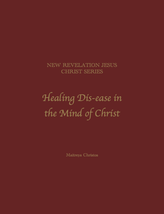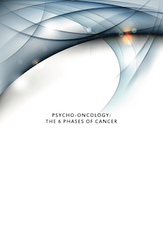Psycho-Oncology: Discover How Stress Causes Cancer
Phase 1 of Cancer: Inescapable Shock
Phase 2 of Cancer: Adrenaline Depletion
Phase 3 of Cancer: The Cancer Fungus
Phase 4 of Cancer: Niacin Deficiency
Phase 5 of Cancer: Vitamin C Depletion
Phase 6 of Cancer: Immune Suppression
NIACIN (VITAMIN B3) AND CANCER
Dr Abram Hoffer, department head of psychiatry at Regina General Hospital in Canada, starting using niacin (vitamin B3) to treat psychiatric patients, some of whom had cancer. What he discovered, by accident, was that the administration of large oral doses of niacin along with vitamin C also effected a cure for cancer. He then began treating patients with advanced stage cancer in his own private practice and conducted a study of 134 patients over a period of 12 years. He found of the 33 patients who were unable or chose not to undertake his vitamin 'cancer treatment' program, that the average survival time was 5.7 months. He also found the survival time of those who did follow his program was on average 100 months. Dr Abram Hoffer was guided by Linus Pauling (a founding father of Intravenous Vitamin C therapy) to write up his study meticulously. Niacin is an important B3 vitamin naturally produced and synthesized in the liver by tryptophan to produce NAD coenzymes. NAD coenzymes keep the Krebs' Citric Acid Cycle in the mitochondria of cells functioning normally. As revealed in Phase 4 of Cancer: Niacin Deficiency, if there is insufficient NAD coenzymes due to a depletion of tryptophan and niacin [caused by prolonged psycho-emotional stress] then the Krebs's Citric Acid Cycle of the cell is broken and the cell reverts to glucose fermentation as an alternate means to obtain smaller amounts of ATP energy for the cell and for the body. When the cell ferments glucose to obtain ATP energy it produces lactic acid, and the somatid (tiny microorganisms necessary for life that live in our blood) pleomorphise (or change) into pathogenic viral-bacterial-yeast-like-fungus to ferment rising glucose and lactic acid, subsequently migrating to the cell nucleus and causing cell mutation and cancer. [See Step 8 of the below 12 Step Cancer Survivor Program for Dr Abram Hoffer's protocol for healing cancer.]
THE LINK BETWEEN CANCER AND NIACIN / NIACINAMIDE / NAD
COENZYME DEFICIENCY
1. In a study conducted by the Department of Human Health and Nutritional Sciences, University of Guelph, Canada, researchers found niacin deficient rats had much higher rates of cancer. "Niacin deficiency impairs poly(ADP-ribose) formation and enhances ethylnitrosourea (ENU)-induced carcinogenesis. Rats were fed niacin deficient (ND), pair-fed (PF) control (30 mg nicotinic acid/kg), or pharmacological niacin (NA; 4 g nicotinic acid/kg) diets. After 2 wk, rats were gavaged (administered) every other day with [cancer-inducing] ENU. Total cancers developed more rapidly in rats on the ND (niacin deficient) diet compared to those receiving high dose supplements of NA (niacin). Importantly, all of these differences occurred in the leukemias, especially the nonlymphocytic leukemia fraction with incidences of 36%, 17%, and 11% in ND (niacin deficient), PF (control), and NA (niacin) rats, respectively." [http://www.ncbi.nlm.nih.gov/pubmed/18444158]
2. In a study conducted by the Dept. of Clinical Sciences, Markey Cancer Center, University of Kentucky, researchers found women with cancer were niacin deficient. "Studies of the consequences of DNA damage in cultured mouse and human cells as a function of niacin status have supported the hypothesis that niacin may be a protective factor that limits carcinogenic events. To test this hypothesis in humans, we used a biochemical method based on the observation that as niacin nutriture decreases, NAD readily declines and NADP remains relatively constant. Healthy control subjects showed a mean niacin number of 62.8 +/- 3.0 compared to 64.0 for individuals on a niacin-controlled diet. Analyses of women in the Malmö Diet and Cancer Study showed a mean niacin number of 60.4 with a range of 44 to 75. The distribution of niacin status in this population was nongaussian, with an unpredictably large number of individuals [with cancer] having low values." [http://www.ncbi.nlm.nih.gov/pubmed/8409103]
3. In a study conducted by the Department of Applied Biological Science, Tokyo Noko University, researchers found niacin inhibited invasion of liver cancer cells. "The effects of niacin, namely, nicotinic acid and nicotinamide (niacinamide), and (niacin alkaloid) trigonelline on the proliferation and invasion of cancer cells were studied using a rat ascites hepatoma cell line of AH109A in culture. Niacin and (niacin alkaloid) trigonelline inhibited the invasion of hepatoma cells at concentrations of 2.5-40 microM without affecting proliferation. Hepatoma cells previously cultured with a reactive oxygen species (ROS)-generating system showed increased invasive activity. Niacin and [niacin] trigonelline suppressed this ROS-potentiated invasive capacity through simultaneous treatment of AH109A cells with the ROS-generating system. The present study indicates for the first time the anti-invasive activities of niacin and (niacin alkaloid) trigonelline against cancer cells." [http://www.ncbi.nlm.nih.gov/pubmed/15785001]
4. In a study conducted by the Arizona Cancer Center, University of Arizona College of Medicine, researchers found niacin significantly reduced the incidence of skin cancer in mice exposed to UV radiation. "Dietary supplementation with 0.1%, 0.5%, or 1.0% niacin reduced the control incidence of skin cancer from 68% to 60%, 48%, and 28%, respectively, at 26.5 weeks after the first UV treatment. Niacin supplementation elevated skin NAD content, which is known to modulate the function of DNA strand scission surveillance proteins p53 and poly(ADP-ribose) polymerase, two proteins critical in cellular responses to UV-induced DNA damage." [http://www.ncbi.nlm.nih.gov/pubmed/10453439]
5. In a landmark study conducted by the Dept. of Medical Biochemistry, University of Madras, Taramani Campus, and Department of Medical Oncology, Government Royapettah Hospital, India, researchers found the addition of niacin, coenzyme Q10 and riboflavin in cancer therapy resulted in significantly lower tumor cell markers. "In breast cancer patients, it is not the primary tumour, but its metastases at distant sites that are the main cause of death. Circulating breast cancer tumour markers such as carcinoembryonic antigen (CEA) and carbohydrate antigen 15-3 (CA 15-3) are reliable indicators of impending relapse, in which an increasing tumour marker level is associated with a very likelihood of developing recurrence. In the present study, 84 breast cancer patients were randomized to receive a daily supplement of 100 mg coenzyme Q10 (CoQ10), 10 mg riboflavin and 50 mg niacin (CoRN) one dosage per day along with 10 mg tamoxifen (TAM) twice a day. Serum CEA and CA 15-3 levels were elevated in untreated breast cancer patients (group II) and their tumour marker levels significantly reduced upon tamoxifen therapy for more than 1 year (group III). Group III patients supplemented with CoRN for 45 d (group IV) and 90 d (group V) along with tamoxifen significantly reduced CEA and CA 15-3 levels. This study suggests supplementing CoRN to breast cancer patients along with tamoxifen reduces the serum tumour marker level and thereby reduce the risk of cancer recurrence and metastases." [http://www.ncbi.nlm.nih.gov/pubmed/17268082]
6. In a further study conducted by the Department of Medical Biochemistry, University of Madras, Taramani Campus, India, researchers found the Krebs' Citric Acid Cycle/metabolic pathway Oxidative Phosphorylation of rats with breast cancer supplemented with niacin, coenzyme Q10 and riboflavin was restored. "Rats were selected for the experimental study. Mammary carcinoma was induced by the oral administration of 7,12-dimethylbenz[a]anthracene, and treatment was started by the oral administration of the energy-modulating vitamins riboflavin (45 mg/kg body weight per d), niacin (100 mg/kg body weight per d) and coenzyme Q10 (40 mg/kg body weight per d) for 28 days. Mitochondria were isolated from the mammary gland and liver of all four groups, and the Krebs cycle and oxidative phosphorylation enzymes were assayed. In mammary carcinoma-bearing animals, the activities of the Krebs cycle and oxidative phosphorylation enzymes were significantly decreased. These activities were restored to a greater extent in animals treated with energy-modulating [riboflavin, niacin and coenzyme Q10] vitamins. From these experimental results, one may hypothesize that the combination therapy of energy-modulating vitamins could be of major therapeutic value in breast cancer." [http://www.ncbi.nlm.nih.gov/pubmed/16022760]
7. In a study conducted by the Department of Molecular and Experimental Medicine, The Scripps Research Institute, California, researchers found reduction of NAD coenzyme levels increased tumor cell metastasis. "Despite advances in clinical therapy, metastasis remains the leading cause of death in breast cancer patients. Mutations in mitochondrial DNA, including those affecting complex I and oxidative phosphorylation, are found in breast tumors and could facilitate metastasis. This study identifies mitochondrial complex I as critical for defining an aggressive phenotype in breast cancer cells. Specific enhancement of mitochondrial complex I activity inhibited tumor growth and metastasis through regulation of the tumor cell NAD+/NADH redox balance, mTORC1 activity, and autophagy. Conversely, nonlethal reduction of NAD+ levels by interfering with nicotinamide phosphoribosyl-transferase expression rendered tumor cells more aggressive and increased metastasis. The results translate into a new therapeutic strategy: enhancement of the NAD+/NADH balance through treatment with NAD+ precursors inhibited metastasis in xenograft models, increased animal survival, and strongly interfered with oncogene-driven breast cancer progression in the MMTV-PyMT mouse model. Thus, aberration in mitochondrial complex I NADH dehydrogenase activity can profoundly enhance the aggressiveness of human breast cancer cells, while therapeutic normalization of the NAD+/NADH balance can inhibit metastasis and prevent disease progression." [http://www.ncbi.nlm.nih.gov/pubmed/23426180]
8. In a leading study by the Department of Medicine, University of Alabama at Birmingham, researchers found that NAD+ enzyme 15-hydroxyprostaglandin dehydrogenase (15-PDGH) significantly decreased migration and proliferation of cancer cells in vitro and in vivo. "It has been shown that expression of NAD(+)-linked 15-hydroxyprostaglandin dehydrogenase (15-PGDH), a key enzyme responsible for PGE(2) inactivation, is suppressed in the majority of cancers, including breast and colon carcinoma. The purpose of this study was to investigate cytotoxicity in vitro and therapeutic efficacy in vivo of 15-PGDH-mediated cancer therapy. The in vitro study showed that Ad-mediated 15-PGDH expression significantly decreased proliferation and migration of cancer cells. Animal breast and colon tumor therapy studies showed that 15-PGDH gene therapy produced a significant delay in 2LMP and LS174T tumor growth. Combined therapy using 15-PGDH and anti-VEGF antibody (bevacizumab) significantly increased inhibition of growth of LS174T tumor xenografts in comparison with agents alone." [http://www.ncbi.nlm.nih.gov/pubmed/19887544]
9. In a study conducted by the Department of General Surgery, Weill Cornell Medical College, New York, researchers found NAD+ enzyme 15-hydroxyprostaglandin dehydrogenase (15-PDGH) was significantly decreased in non-small lung cancer cells. "Elevated levels of procarcinogenic prostaglandins (PG) are found in a variety of human malignancies including non-small cell lung cancer (NSCLC). NAD+-dependent 15-hydroxyprostaglandin dehydrogenase (15-PGDH), the key enzyme responsible for metabolic inactivation of PGs, is down-regulated in various malignancies. The main objective of this study was to elucidate the effect of loss of (NAD+) 15-PGDH on levels of bioactive lipids in NSCLC (non-small cell lung cancer). We found that levels of cyclooxygenase-2 and microsomal prostaglandin synthase 1 were commonly increased whereas the amount of (NAD+) 15-PGDH was frequently decreased in NSCLC (non-small cell lung cancer) compared with adjacent normal lung. Reduced expression of (NAD+) 15-PGDH occurred in tumor cells and was paralleled by decreased (NAD+) 15-PGDH activity in tumors." [http://www.ncbi.nlm.nih.gov/pubmed/19138967]
10. In a study conducted by the Department of Pharmaceutical Sciences, University of Kentucky, researchers found mice injected with NAD + enzyme 15-hydroxyprostaglandin dehydrogenase (15-PDGH) had a significant decrease in tumor cell growth. "To further explore if (NAD+) 15-PGDH is related to tumorigenesis, athymic (T-cell deficient) nude mice were injected with control A549 [tumor] cells or cells transiently over-expressing [normal] wild-type or mutant (NAD+) 15-PGDH. It was found that mice injected with control A549 [tumor] cells or with cells expressing mutant (NAD+ 15-PGDH) enzyme produced tumors normally. However, mice injected with A549 [tumor] cells expressing wild-type [naturally occurring NAD+] 15-PGDH had a significant decrease in tumor growth. Examining the effects of (NAD+) 15-PGDH expression on cellular changes in A549 [tumor] cells, we found that over-expression of (NAD+) 15-PGDH induced apoptosis (cell death) of A549 [tumor] cells as evidenced by fragmentation of DNA. These results suggest that (NAD+) 15-PGDH may decrease the level of proliferative PGE2 (prostaglandin), induce apoptosis (tumor cell death) and function like a tumor suppressor." [http://www.ncbi.nlm.nih.gov/pubmed/15358636]
2. In a study conducted by the Dept. of Clinical Sciences, Markey Cancer Center, University of Kentucky, researchers found women with cancer were niacin deficient. "Studies of the consequences of DNA damage in cultured mouse and human cells as a function of niacin status have supported the hypothesis that niacin may be a protective factor that limits carcinogenic events. To test this hypothesis in humans, we used a biochemical method based on the observation that as niacin nutriture decreases, NAD readily declines and NADP remains relatively constant. Healthy control subjects showed a mean niacin number of 62.8 +/- 3.0 compared to 64.0 for individuals on a niacin-controlled diet. Analyses of women in the Malmö Diet and Cancer Study showed a mean niacin number of 60.4 with a range of 44 to 75. The distribution of niacin status in this population was nongaussian, with an unpredictably large number of individuals [with cancer] having low values." [http://www.ncbi.nlm.nih.gov/pubmed/8409103]
3. In a study conducted by the Department of Applied Biological Science, Tokyo Noko University, researchers found niacin inhibited invasion of liver cancer cells. "The effects of niacin, namely, nicotinic acid and nicotinamide (niacinamide), and (niacin alkaloid) trigonelline on the proliferation and invasion of cancer cells were studied using a rat ascites hepatoma cell line of AH109A in culture. Niacin and (niacin alkaloid) trigonelline inhibited the invasion of hepatoma cells at concentrations of 2.5-40 microM without affecting proliferation. Hepatoma cells previously cultured with a reactive oxygen species (ROS)-generating system showed increased invasive activity. Niacin and [niacin] trigonelline suppressed this ROS-potentiated invasive capacity through simultaneous treatment of AH109A cells with the ROS-generating system. The present study indicates for the first time the anti-invasive activities of niacin and (niacin alkaloid) trigonelline against cancer cells." [http://www.ncbi.nlm.nih.gov/pubmed/15785001]
4. In a study conducted by the Arizona Cancer Center, University of Arizona College of Medicine, researchers found niacin significantly reduced the incidence of skin cancer in mice exposed to UV radiation. "Dietary supplementation with 0.1%, 0.5%, or 1.0% niacin reduced the control incidence of skin cancer from 68% to 60%, 48%, and 28%, respectively, at 26.5 weeks after the first UV treatment. Niacin supplementation elevated skin NAD content, which is known to modulate the function of DNA strand scission surveillance proteins p53 and poly(ADP-ribose) polymerase, two proteins critical in cellular responses to UV-induced DNA damage." [http://www.ncbi.nlm.nih.gov/pubmed/10453439]
5. In a landmark study conducted by the Dept. of Medical Biochemistry, University of Madras, Taramani Campus, and Department of Medical Oncology, Government Royapettah Hospital, India, researchers found the addition of niacin, coenzyme Q10 and riboflavin in cancer therapy resulted in significantly lower tumor cell markers. "In breast cancer patients, it is not the primary tumour, but its metastases at distant sites that are the main cause of death. Circulating breast cancer tumour markers such as carcinoembryonic antigen (CEA) and carbohydrate antigen 15-3 (CA 15-3) are reliable indicators of impending relapse, in which an increasing tumour marker level is associated with a very likelihood of developing recurrence. In the present study, 84 breast cancer patients were randomized to receive a daily supplement of 100 mg coenzyme Q10 (CoQ10), 10 mg riboflavin and 50 mg niacin (CoRN) one dosage per day along with 10 mg tamoxifen (TAM) twice a day. Serum CEA and CA 15-3 levels were elevated in untreated breast cancer patients (group II) and their tumour marker levels significantly reduced upon tamoxifen therapy for more than 1 year (group III). Group III patients supplemented with CoRN for 45 d (group IV) and 90 d (group V) along with tamoxifen significantly reduced CEA and CA 15-3 levels. This study suggests supplementing CoRN to breast cancer patients along with tamoxifen reduces the serum tumour marker level and thereby reduce the risk of cancer recurrence and metastases." [http://www.ncbi.nlm.nih.gov/pubmed/17268082]
6. In a further study conducted by the Department of Medical Biochemistry, University of Madras, Taramani Campus, India, researchers found the Krebs' Citric Acid Cycle/metabolic pathway Oxidative Phosphorylation of rats with breast cancer supplemented with niacin, coenzyme Q10 and riboflavin was restored. "Rats were selected for the experimental study. Mammary carcinoma was induced by the oral administration of 7,12-dimethylbenz[a]anthracene, and treatment was started by the oral administration of the energy-modulating vitamins riboflavin (45 mg/kg body weight per d), niacin (100 mg/kg body weight per d) and coenzyme Q10 (40 mg/kg body weight per d) for 28 days. Mitochondria were isolated from the mammary gland and liver of all four groups, and the Krebs cycle and oxidative phosphorylation enzymes were assayed. In mammary carcinoma-bearing animals, the activities of the Krebs cycle and oxidative phosphorylation enzymes were significantly decreased. These activities were restored to a greater extent in animals treated with energy-modulating [riboflavin, niacin and coenzyme Q10] vitamins. From these experimental results, one may hypothesize that the combination therapy of energy-modulating vitamins could be of major therapeutic value in breast cancer." [http://www.ncbi.nlm.nih.gov/pubmed/16022760]
7. In a study conducted by the Department of Molecular and Experimental Medicine, The Scripps Research Institute, California, researchers found reduction of NAD coenzyme levels increased tumor cell metastasis. "Despite advances in clinical therapy, metastasis remains the leading cause of death in breast cancer patients. Mutations in mitochondrial DNA, including those affecting complex I and oxidative phosphorylation, are found in breast tumors and could facilitate metastasis. This study identifies mitochondrial complex I as critical for defining an aggressive phenotype in breast cancer cells. Specific enhancement of mitochondrial complex I activity inhibited tumor growth and metastasis through regulation of the tumor cell NAD+/NADH redox balance, mTORC1 activity, and autophagy. Conversely, nonlethal reduction of NAD+ levels by interfering with nicotinamide phosphoribosyl-transferase expression rendered tumor cells more aggressive and increased metastasis. The results translate into a new therapeutic strategy: enhancement of the NAD+/NADH balance through treatment with NAD+ precursors inhibited metastasis in xenograft models, increased animal survival, and strongly interfered with oncogene-driven breast cancer progression in the MMTV-PyMT mouse model. Thus, aberration in mitochondrial complex I NADH dehydrogenase activity can profoundly enhance the aggressiveness of human breast cancer cells, while therapeutic normalization of the NAD+/NADH balance can inhibit metastasis and prevent disease progression." [http://www.ncbi.nlm.nih.gov/pubmed/23426180]
8. In a leading study by the Department of Medicine, University of Alabama at Birmingham, researchers found that NAD+ enzyme 15-hydroxyprostaglandin dehydrogenase (15-PDGH) significantly decreased migration and proliferation of cancer cells in vitro and in vivo. "It has been shown that expression of NAD(+)-linked 15-hydroxyprostaglandin dehydrogenase (15-PGDH), a key enzyme responsible for PGE(2) inactivation, is suppressed in the majority of cancers, including breast and colon carcinoma. The purpose of this study was to investigate cytotoxicity in vitro and therapeutic efficacy in vivo of 15-PGDH-mediated cancer therapy. The in vitro study showed that Ad-mediated 15-PGDH expression significantly decreased proliferation and migration of cancer cells. Animal breast and colon tumor therapy studies showed that 15-PGDH gene therapy produced a significant delay in 2LMP and LS174T tumor growth. Combined therapy using 15-PGDH and anti-VEGF antibody (bevacizumab) significantly increased inhibition of growth of LS174T tumor xenografts in comparison with agents alone." [http://www.ncbi.nlm.nih.gov/pubmed/19887544]
9. In a study conducted by the Department of General Surgery, Weill Cornell Medical College, New York, researchers found NAD+ enzyme 15-hydroxyprostaglandin dehydrogenase (15-PDGH) was significantly decreased in non-small lung cancer cells. "Elevated levels of procarcinogenic prostaglandins (PG) are found in a variety of human malignancies including non-small cell lung cancer (NSCLC). NAD+-dependent 15-hydroxyprostaglandin dehydrogenase (15-PGDH), the key enzyme responsible for metabolic inactivation of PGs, is down-regulated in various malignancies. The main objective of this study was to elucidate the effect of loss of (NAD+) 15-PGDH on levels of bioactive lipids in NSCLC (non-small cell lung cancer). We found that levels of cyclooxygenase-2 and microsomal prostaglandin synthase 1 were commonly increased whereas the amount of (NAD+) 15-PGDH was frequently decreased in NSCLC (non-small cell lung cancer) compared with adjacent normal lung. Reduced expression of (NAD+) 15-PGDH occurred in tumor cells and was paralleled by decreased (NAD+) 15-PGDH activity in tumors." [http://www.ncbi.nlm.nih.gov/pubmed/19138967]
10. In a study conducted by the Department of Pharmaceutical Sciences, University of Kentucky, researchers found mice injected with NAD + enzyme 15-hydroxyprostaglandin dehydrogenase (15-PDGH) had a significant decrease in tumor cell growth. "To further explore if (NAD+) 15-PGDH is related to tumorigenesis, athymic (T-cell deficient) nude mice were injected with control A549 [tumor] cells or cells transiently over-expressing [normal] wild-type or mutant (NAD+) 15-PGDH. It was found that mice injected with control A549 [tumor] cells or with cells expressing mutant (NAD+ 15-PGDH) enzyme produced tumors normally. However, mice injected with A549 [tumor] cells expressing wild-type [naturally occurring NAD+] 15-PGDH had a significant decrease in tumor growth. Examining the effects of (NAD+) 15-PGDH expression on cellular changes in A549 [tumor] cells, we found that over-expression of (NAD+) 15-PGDH induced apoptosis (cell death) of A549 [tumor] cells as evidenced by fragmentation of DNA. These results suggest that (NAD+) 15-PGDH may decrease the level of proliferative PGE2 (prostaglandin), induce apoptosis (tumor cell death) and function like a tumor suppressor." [http://www.ncbi.nlm.nih.gov/pubmed/15358636]





